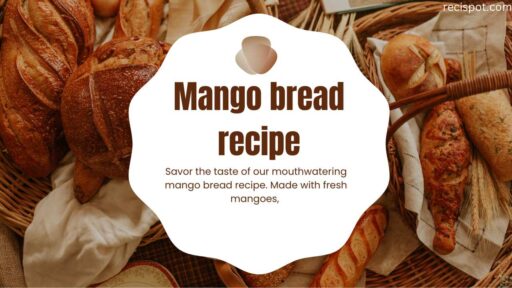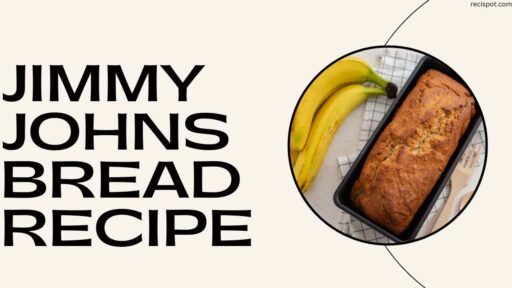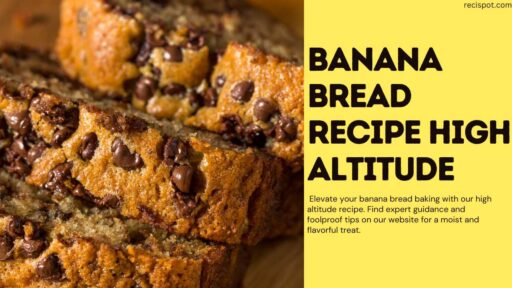Looking for the best buckwheat bread recipes? Look no further! Our website offers a collection of easy-to-follow recipes for you to enjoy.
The Buckwheat bread recipe has been a staple of my kitchen for years. When I first discovered that I had gluten sensitivity, it was the beginning of finding suitable alternatives for bread.
That’s when I came across buckwheat. Contrary to its name, buckwheat is not related to wheat; rather, it is actually a fruit seed closely related to rhubarb and sorrel.
My diet was forever altered thanks to this revelation.
Buckwheat has a strong taste and great nutritional composition necessary for making a rich gluten-free loaf. After many trials and errors, I finally found a recipe. It made bread with delicate crumbs, crunchy crusts, and the flavor we all know. The process was never smooth, but what emerged from it was very rewarding, and right now, I am eager to share it with you.
Making the perfect loaf of buckwheat bread is more than following a recipe. It’s about understanding its key principles. Every step is key. It matters how buckwheat flour mixes with other ingredients.
You also need techniques for gluten-free baking. Buckwheat bread isn’t just any old alternative for those who cannot tolerate gluten; it tastes good on its own, too.
Benefits of Buckwheat Bread
Buckwheat bread is a great option for people avoiding gluten. It has many health benefits. These make it an ideal addition to anyone’s diet. First, buckwheat’s have lots of dietary fiber.
It helps digestion and makes you feel full. Additionally, there are several essential amino acids in our bodies. They are found in proteins. We can get them by eating high-quality protein foods, such as buckwheat.
Additionally, buckwheat’s contain lots of magnesium. It is critical for muscle and nerve function. They also have B vitamins that help with energy metabolism.
These antioxidants, particularly rutin, help improve blood flow. They also reduce cholesterol. Hence, for anyone looking to maintain a balanced diet, buckwheat bread is a nourishing option due to these health benefits.
The other advantage of buckwheat bread is its low glycemic index. This implies it has lower effects on blood sugar. That makes it ideal for managing diabetes or for maintaining steady energy all day. Also, eating low-GI foods may help in weight management. They reduce hunger and the tendency to overeat.
Understanding Gluten-Free Diets
The popularity of gluten-free diets has grown. They are popular among those with celiac disease as well as those with non-celiac gluten sensitivity.

Credit: www.pexels.com
Gluten stands for proteins found in wheat, barley, rye, and triticale. Gluten consumption harms people with celiac disease. It causes an autoimmune reaction that injures the small intestine. Some people without this disease have reported their symptoms being relieved by cutting out gluten. They had bloating, gas, and tiredness.
Those who want to bake gluten free breads should understand a gluten free diet. It involves more than just avoiding wheat. You also need to understand all other sources of gluten and protect against cross contamination.
This means checking labels carefully. Be aware of hidden sources of gluten in processed foods. But, those who wish to bake at home need alternatives. They should provide similar structure and texture to wheat flour.
BREAD-MAKING INSTRUCTIONS
The hardest part of gluten-free baking is remaking the sponginess and volume that gluten gives bread. Gluten helps to entrap air inside, creating a soft, fluffy structure. So, its absence forces us to rely on other binders and agents. They are used to make dough soft and tasty, like bread, but without gluten.
WHY YOU SHOULD BAKE WITH BUCKWHEAT THE GLUTEN-FREE WAY
I choose buckwheat flour over other types of flour when baking gluten-free for one key reason. It aids digestion for people with Celiac disease. It also gives unique tastes and textures to baked goods. This is in contrast with other gluten-free flours.
They are sometimes coarse or tasteless. But buckwheat has an earthy flavor. It also has a powdery texture similar to wheat flour, which is different from many other substitutes.
Furthermore, buckwheat can be used differently, for example, in pancakes, muffins, cookies, cakes, etc. This adaptability makes it a must-have product for all those on gluten-free diets. Whether you are an experienced baker or just starting out as one, buckwheat flour is very forgiving and easy-going, thus wonderful for new entrants into the field of gluten-free baking.
Ingredients for Buckwheat Bread Recipe
To make this perfect loaf, you will need several carefully selected ingredients for your buckwheat bread recipe. Here’s what you will need:
Buckwheat flour: Adds taste and structure.
Tapioca starch: Improved elasticity; better crust quality.
Psyllium husk powder: The natural fiber acts as a glue-like binder, resulting in a wheat-like texture.
Instant yeast: Gluten-free flour raises due to a leavening agent.
Sugar: A dash of sweetness; food for yeast.
Salt: Enhances flavor; gives form to dough.
Warm water: Initiates yeast system and hydrates flour.
Olive oil: Provides moisture and enhances the taste of bread, making it delicious.
Apple cider vinegar: Rises the nature of the dough and makes the crumb tender.
These ingredients work together to create a gluten-free loaf that is enjoyable and palatable. Every ingredient plays a crucial role in this recipe, and when combined, results into a bread that is comparable to any traditional wheat-based loaf.
Making Buckwheat Bread Step by Step
Mixing Dry Ingredients
To begin with, the dry items must be put together in order to make our buckwheat bread. In a large mixing bowl whisk together the buckwheat flour, tapioca starch, psyllium husk powder, instant yeast, sugar and salt. This ensures even rising as well as consistent taste throughout.…
Yeast Activation
The next thing to do is activate the yeast. In another bowl, mix together warm water, a pinch of sugar and instant yeast. Stir well before allowing it to sit for about ten minutes until frothy.
This step is necessary because it shows that the yeast is alive and ready to perform its magic. The temperature of the water is important here; too hot, you will kill the yeast; too cold, you won’t activate it.
Combining Wet and Dry Ingredients
When activated, add this to dry ingredients together with olive oil or apple cider vinegar. Use a wooden spoon or mixer with a dough hook attachment while mixing together until you achieve a uniform dough.
It should feel slightly sticky when touched as normal for gluten-free bread doughs. If it’s too wet, you can increase buckwheat flour but be cautious in order not to make your loaf heavy.
The First Rise
Grease your bread pan and transfer dough into this pan smoothing the top using a wet spatula. Cover your pan using a moist cloth then keep it at any warm place so as to rise up slowly .
This need for patience comes in as the dough should double in size which may take 1-2 hours depending on how long you are willing to wait .Much warmth from the moist material makes an ideal environment that lets this mushroom go about its business.
Baking the Bread
Preheat oven to 375°F (190°C). Once risen, place the bread pan inside the oven and bake for 45-50 minutes until golden brown on top and the toothpick comes out clean when inserted into the center of the loaf. The baking time may vary depending on your oven, so keep an eye on it when you are close to finishing.
Cooling
Afterwards remove from oven let cool in pan for approximately 10minutes before transferring onto wire rack till completely cool . It’s tempting however, try not to cut while still warm because cooling will give structure making healing easier once it’s cooled; you are ready to slice and enjoy your homemade buckwheat bread.
Tips for Successful Buckwheat Bread Baking
Making gluten free bread can be a daunting task, but with a little sleight of hand, it’s very possible to bake one that is both delicious as well as fulfilling. Here are some insights I have gained through my baking escapades:
Ensure Ingredients are at Room Temperature
It may sound like a joke, but this seemingly simple fact has a great deal of significance. When at room temperature, ingredients mix better and react accordingly among themselves, especially for gluten-free cooking. This is particularly important when it comes to the water used in hydrating yeast; it is too cold, and it will not wake up or, too hot, kill it.
Measure Ingredients Precisely
This precision is key when making gluten-free breads. Even small differences in amounts of ingredients can change the texture of your loaf significantly. For perfect results, always use a digital scale to weigh your ingredients. If you prefer cups, then ensure that flour is spooned into the measuring cup so as to level precisely using a knife.
Choose the Right Bread Pan
The size of the bread pan affects the shape and rise of your loaf. A pan that is too big will give you flatbread, while a smaller one will make for a taller loaf. The best bet is to use a standard 9×5 inch loaf pan for this buckwheat bread recipe.
Variations and Additions to the Buckwheat Bread Recipe
Once basic buckwheat bread has been mastered, it might be time to try variations and additions. Here are some of those thoughts:
Add Seeds or Nuts
For added texture and nutrition, think about putting seeds like sunflower, pumpkin or flaxseed into your dough. Additionally, chopped nuts like walnuts or pecans can also add some lovely crunch. They only need to be folded into the dough before the first rise.
Experiment with Flavors
Bread flavor can be dramatically altered by using herbs and spices. Try adding rosemary, thyme or oregano for an aromatic twist in taste. In addition, cinnamon, nutmeg and touch of honey or maple syrup could give it a sweeter appeal.
Try Different Flour Blends
While buckwheat flour alone is wonderful; you can also blend it with other gluten free flours such as brown rice flour or almond flour for different textures and flavors. Just ensure that liquid ratios are adjusted accordingly.
Nutritional Value of Buckwheat Bread
This is not simply gluten-free but rather contains high amounts of nutrients compared to other diets on Earth. Besides protein content, this type of bread provides numerous health advantages, including digestive issues.
Gluten-free food products have become popularly used, especially among individuals suffering from celiac disease, which involves problems arising from the consumption of foods containing gluten.
Dietary fiber present in many plants is important in the human body because it helps in the proper functioning of the digestive system. Some amino acids cannot be synthesized by the human body alone, so people must include them in their diet. Even though most plants contain some amino acids, only a few of them, of which buckwheat is an example, have all the necessary ones.
Buckwheat flour is rich in dietary magnesium, which plays a crucial role in muscle and nerve function and helps to keep the immune system healthy. Buckwheat is also high in B vitamins, which assist our bodies in converting food into energy.
Furthermore, several antioxidants, such as rutin, found in buckwheat have anti-inflammatory properties and can help reduce blood pressure and cholesterol levels.
Note that even with its immense benefits, buckwheat bread remains calorie-dense, so caution should be taken when consuming it alongside other foods. Nevertheless, if you are looking for a healthy gluten-free bread option, you cannot go wrong with choosing buckwheat bread.
Health Benefits Highlight
Choosing to make your bread with buckwheat means feeding your body good things. This includes:
- Better heart health
- Improved diabetes management
- Weight control assistance
- Protection against childhood asthma
With such bountiful benefits, every homemade slice of your buckwheat bread is an investment in your welfare.
Frequently Ask Question
Is this recipe suitable for someone with celiac disease?
Yes, buckwheat is naturally gluten-free and safe for people suffering from celiac disease. However, ensure that all other ingredients used are also gluten-free and that there is no risk of cross-contamination.
Can I use a bread machine for this buckwheat bread recipe?
Yes – Use the one set on gluten free setting. Additionally, ingredients should be added to the machine according to manufacturer’s instructions on order.
How do I store buckwheat bread to keep it fresh?
If you want to store buckwheat bread for a few days, don’t refrigerate it. Keep it tightly wrapped in the refrigerator if you want to keep it for more than a week, or freeze it for longer periods.
What went wrong with my bread when it did not rise well?
There may be several reasons, among which may include inactive yeast, water at the wrong temperature, or insufficient rising time. Make sure your yeast has not expired, warm your water (not hot or cold), and allow your dough adequate time to rise in a warm place.
Summary
The development of this fantastic buckwheat bread recipe has taken hard work and dedication as well as proof that gluten-free baking yields just as tasty and fulfilling results as any normal loaf made from wheat.
Anyone can make a loaf of buckwheat bread that is more than just a gluten-free substitute but also a delicious treat if they have the right ingredients, possess some patience, and tender loving care.
Remember that baking is part artistry and part science. It might take some trials to get it perfect; however, each loaf will bring you closer to mastering the skill. Therefore, gather all your ingredients together, preheat the oven, and go on into your personal baking adventure with this buckwheat bread recipe. Enjoy!






